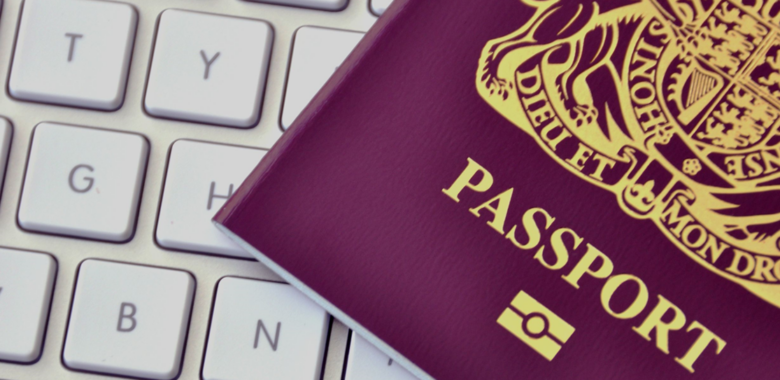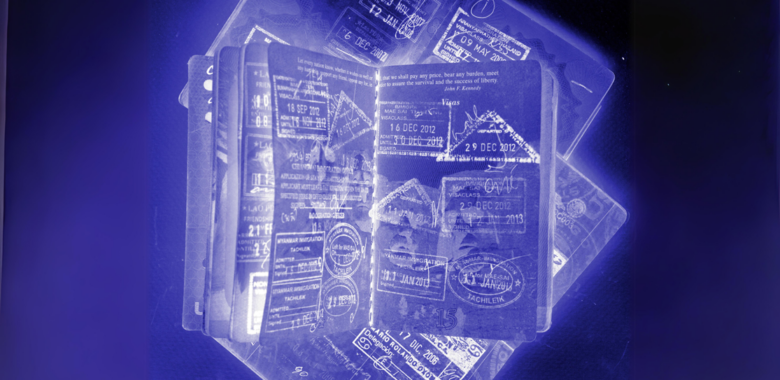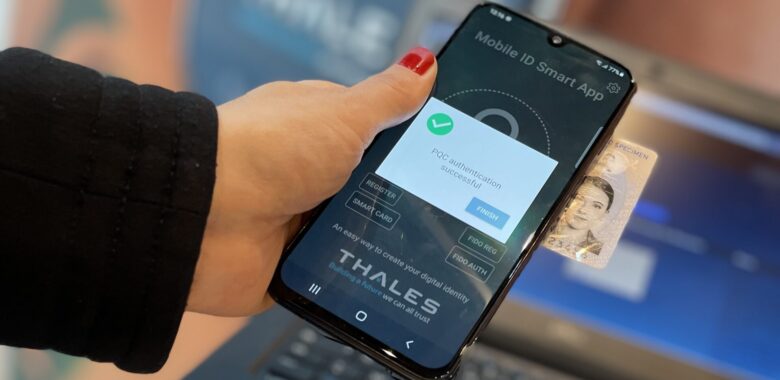In the next two decades, passports are poised for transformative changes. With the rapid pace of digitalization, many are questioning whether, in 2044, physical documents will still be prevalent and how the emergence of artificial intelligence (AI) could revolutionize document design and verification.
Although increasingly digital, physical passports are likely to remain a staple.
By 2044, we anticipate a dual issuance system where citizens are provided with both physical and digital documents. This shift will facilitate seamless travel, allowing for pre-trip digital credentialing for various steps like check-in and border control, using facial recognition as the primary identification method.
Such a system would be useful in the case of peak demand for passports before holiday season, when it can be a much longer wait, with a digital travel document available electronically as soon as the application is approved, while the physical document is produced and shipped. This would also be useful in cases of loss or theft of the passport, to instantly receive an emergency travel documents.
The persistence of physical passports, albeit in a diminished role, highlights a fundamental human need for tangible identification. These documents, while serving as a key to our digital identities, will continue to symbolize national sovereignty and individual rights.
So we will still have a passport, but what sort of features will it carry?
A trend that has accelerated over the past decade is the proliferation of portraits in documents.
With the adoption of polycarbonate material for the data page, different personalization techniques, including laser engraving, have become available to multiply portraits in several locations in a lens, in a clear window, perforated in the data page, or inkjet printed on page 3 for instance. This makes it significantly more complex for forgers to alter a document and match it to the new “owner”.
These advanced personalization methods increase the challenges faced by border officers to verify multiple data points but the number of portraits is unlikely to change. As personalization technologies continue to evolve, the documents will also integrate and combine more machine-only verifiable features, especially in the context of increasingly automated border controls.
How about the secure embedded software?
The shadow of quantum computing looms large, presenting both opportunities and challenges. The shift to quantum-safe algorithms is not just a technical upgrade; it is a critical step in safeguarding our personal and national security against emerging threats.
By 2044, quantum computers will be mainstream and comfortably able to break 2024 algorithms in a few hours as opposed to millions of years.
The main risks for passports are deciphering Document Signer certificates to sign a fake document that would match with the International Civil Aviation Organization (ICAO) Public Key Directory and the retrieval of additional biometrics in high quality formats that could be used for identity theft.
ICAO will have made the necessary changes in the late 2020s to replace existing algorithms with quantum-safe alternatives, initiating a soft transition with hybrid schemes mixing conventional cryptography and post-quantum cryptography.
In 2044, ePassports should be crypto agile, allowing for upgrades to algorithms for documents in the field, to maintain robustness over the document’s lifetime. This would be done seamlessly either when crossing borders or with a smartphone and app.
Our ePassports will be much more ecofriendly
Environmental sustainability is emerging as a cornerstone of passport design well before 2044. The adoption of recycled materials and reduced reliance on virgin fossil feedstocks mirrors a broader societal shift towards environmental responsibility. This evolution is particularly poignant, considering the travel industry’s historical impact on the environment.
Sustainability will continue to be a key focus, with passport data pages incorporating a recycled polycarbonates while maintaining durability and security characteristics. Some will integrate new plastic free materials, using alternatives like bio-mass or circular economy feedstocks. Passports will also have less visa pages, due to less frequent stamping, and will use more paper coming from responsibly-managed forests.
AI will boost passport design and verification
Artificial Intelligence has so many potential use cases that it is difficult to make any predictions about how it will be used 20 years from now, but it will undoubtedly play a crucial role in enhancing passport design and verification processes.
As a powerful tool for innovation and security, AI will revolutionize how we design, verify, and protect passports. Its application ranges from enhancing the development of secure embedded software to refining fraud detection mechanisms at border controls. However, this technological arms race will also empower counterfeiters, necessitating a continuous and dynamic approach to security.
R&D will benefit from AI assisting in testing the combination of security features against fraud, building on latest forgeries intercepted at borders to help understand how the features can be enhanced to make them more robust. AI could also help assess compliance with ICAO 9303 standard during the design phase.
AI could also be employed to improve fraud detection at borders, by refining optical character recognition for text parsing and eliminating the need to create detection templates for every new passport launched by a country (and the many variants).
It could also help border officers with electrical verification to trust or not trust a document instead of the current green/red indicators for the various mechanisms and data groups.
However, AI presents a challenge since fraudsters will also leverage it for more sophisticated counterfeits, such as:
- Recreating backgrounds hidden by portraits to create blanks,
- Assisting in more accurate color separation when preparing printing plates,
- Recreating custom fonts of personalized text,
- Reviewing documents features to suggest new counterfeiting methods,
2044 v 2024 – The complete picture
Overall, the passport of 2044 will represent a harmonious blend of tradition and innovation. While physical passports will retain their symbolic and practical importance, their digital counterparts will enable more efficient and secure travel experiences.
The imminent arrival of quantum computing necessitates a shift to quantum-safe algorithms, ensuring that passport security remains impervious to emerging technological threats, whilst environmental sustainability will be a cornerstone of passport design, emphasizing the use of recycled materials.
Artificial Intelligence will also play a pivotal role in enhancing passport design and verification, offering dynamic solutions to ever-evolving security challenges. Visual security features will still be a necessity, given the AI boost that fraudsters will also be able to leverage.
Ultimately, these advancements signal a future where passports will evolve to become more secure, sustainable, and intelligent, aligning with the ever-changing landscape of travel and technology.



